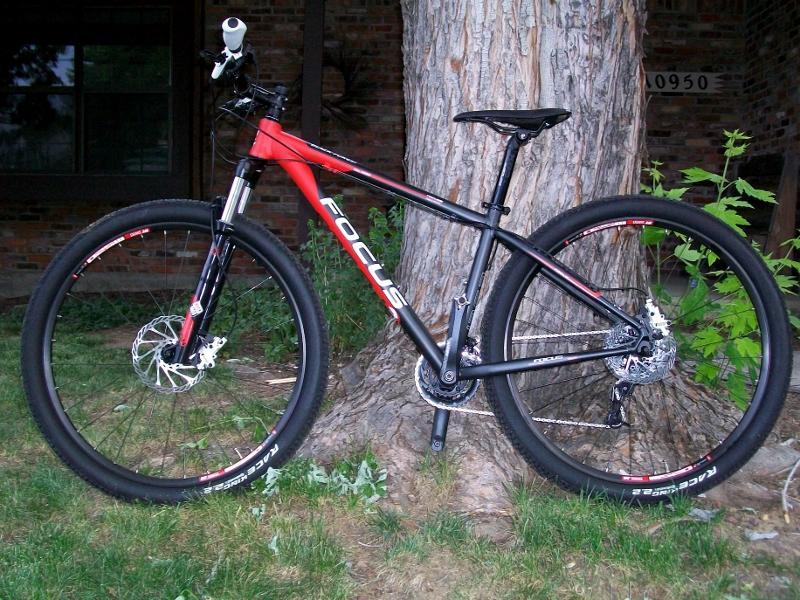 Hardtail or full suspension? This question comes up all the time on the Singletracks Forums so hopefully this quick list of the pros and cons of each of mountain bike style will help you decide which one will work better for you.
Hardtail or full suspension? This question comes up all the time on the Singletracks Forums so hopefully this quick list of the pros and cons of each of mountain bike style will help you decide which one will work better for you.
My Perspective
I will be 40 this year, and although I’ve ridden bikes all my life, I’ve been a serious mountain biker since I moved to Colorado in 2004. I started out on a Specialized Rockhopper hardtail which I rode for 4 years. Then I got a Giant Trance full suspension bike and rode it for 3 years. Now I’m riding a hardtail again, but this time on a 29-inch wheels.
What is the difference?
Those of us who have been riding for a while take this for granted, but for those who are new to the sport the differences may be a little hazy. Here’s the quick and dirty info:
A hardtail is a bike with a solid frame and it usually has a suspension fork on the front. Here is a typical hardtail model:
[see_also id=”52899″][/see_also]
A full suspension (FS) bike has the same fork out front, but it has a frame that consists of two pieces, a front triangle and rear triangle, that are joined by pivots. This allows the two sections of the frame to move independently, and the rate of that movement is controlled by a shock absorber. Here is a typical full suspension model:
Okay, so which is better?
The answer is: it depends. It comes down to personal preference, riding style, average terrain encountered, and other factors. With that being said, however, we’ll go over what each model excels at, as well as some limitations of each. This should help you decide which model better fits your riding style, or perhaps it will convince you to buy one of each! Here goes…
Climbing
Hardtail bikes transfer pedaling power to the rear wheel more efficiently. On non-technical surfaces, this results in better acceleration and makes it easier to sustain higher speeds over a long time. Once the terrain turns technical, rear suspension allows more of the available rear wheel power to actually reach the ground by allowing the wheel to better articulate over obstacles. This helps to maintain traction and mitigates “spinning out.” Also, with FS it is generally easier to stay seated while climbing.
Downhill
On bumpy, technical downhill trails, FS bikes have a clear advantage – but don’t count the hardtail out just yet. I’ve ridden plenty of technical stuff on a hardtail and it handles just fine. The difference is that the “suspension” is your legs. The net result is getting tired faster, but if you’re conditioned to it, it’s not a big deal. In my opinion, technical downhill on a hardtail also makes you choose a better line, and in the long run can make you a better overall rider.
[see_also id=”52902″][/see_also]
Maintenance
There is no disputing that hardtails require less long term maintenance. All of those pivots and linkages on the FS will need periodic servicing, and the rear shock will need new seals every season or two. Frame articulation causes cables to rub on the frame, and the chain has to work harder to keep up with everything. If you enjoy simplicity and want to keep your maintenance costs low, a hardtail is a good choice. (Or a rigid singlespeed for that matter, but that’s a topic for another post.)
Weight
Advancements in modern frame design are constantly shifting the meaning of “lightweight” in mountain biking. In general a hardtail can be built lighter than the average FS bike, but there are also some seriously lightweight FS bikes now too. Whichever type you’re considering, as long as the weight is reasonable, I wouldn’t worry too much about it. How well it fits and the overall ride quality are more important.
Price
The basic hardtail bike design has existed for over 100 years. FS design is a hotbed of innovation and various patents have been granted, resulting in license agreements between some of the bike manufacturers. Guess who ultimately pays those R&D and licensing costs… you do! The point is that if you are on a strict budget, you can probably get more bike for your buck with a hardtail.
Comfort (These Old Bones)
As I mentioned, I’m almost 40. It didn’t used to bother me to bomb down miles of rough downhill, holding my rear off the saddle all the way. The older I get, the nicer it is to be able to sit down on all but the roughest stuff. I also find that I can go faster over rough stuff with the FS. On the other hand, the hardtail 29er that I’m currently riding has a much smoother ride than my old 26er hardtail. It’s like a magic trick!
The Bottom Line
If you’re just starting out, on a really tight budget, or just enjoy simplicity, you should definitely consider one of the great hardtails on the market today. It can get you out there riding without costing a lot of coin up front and saves on maintenance costs down the line.
If you know you want to huck drops or ride rough, technical trails most of the time or if you’re an older rider and just want a smoother ride, then you’ll likely be happier on a full suspension bike. As I’ve outlined, each type of bike excels in different areas, and it really does come down to your preference and the type of riding you like to do.
So what do you think – hardtail or full-suspension?
[see_also id=”199145″][/see_also]


















